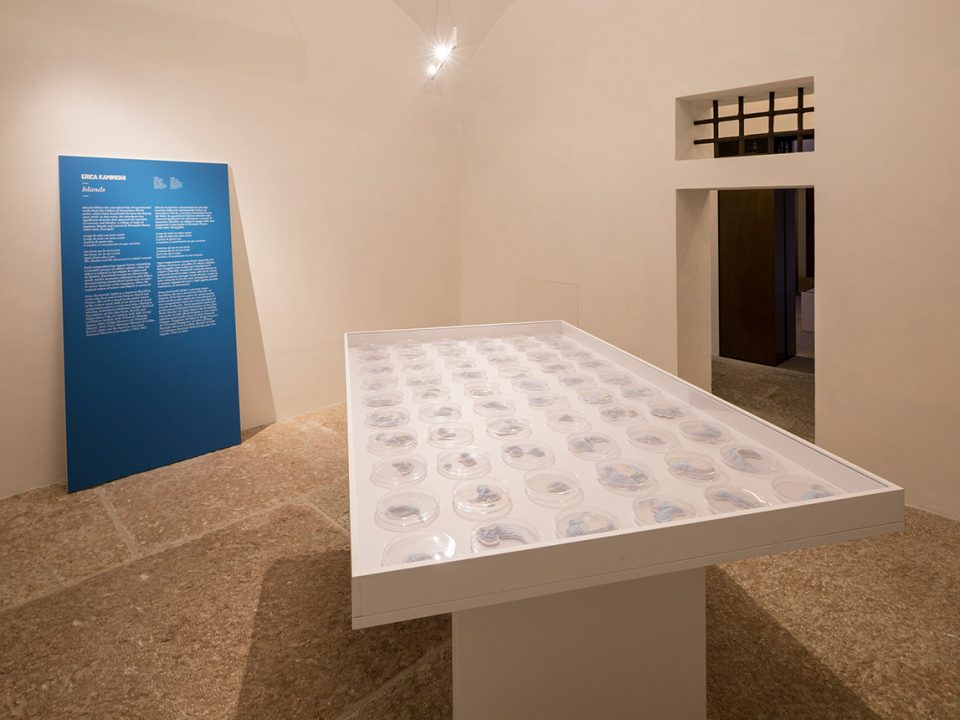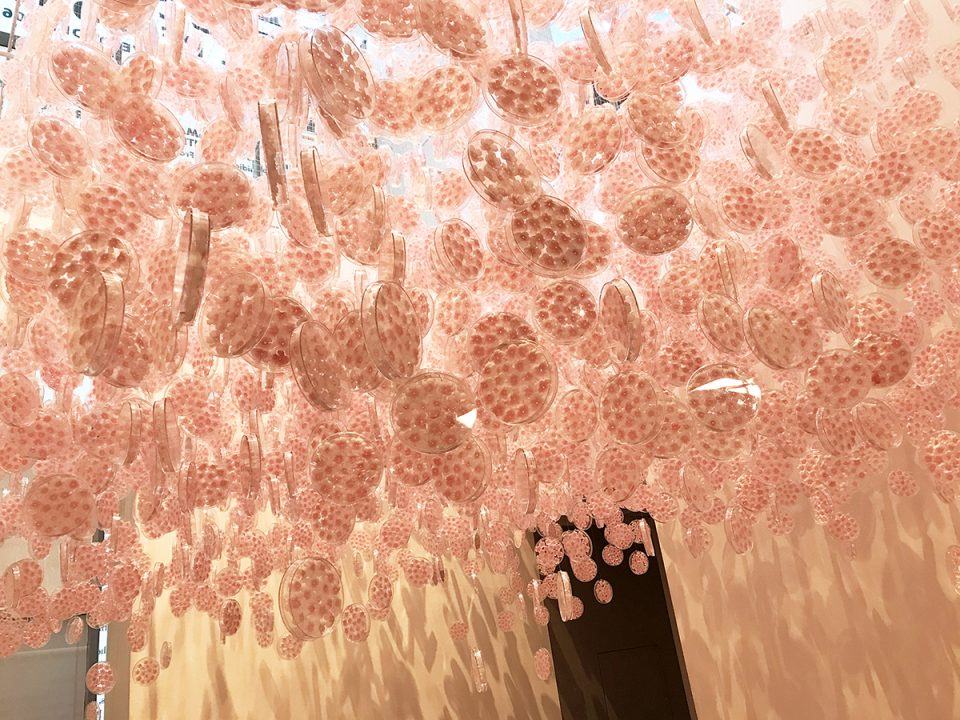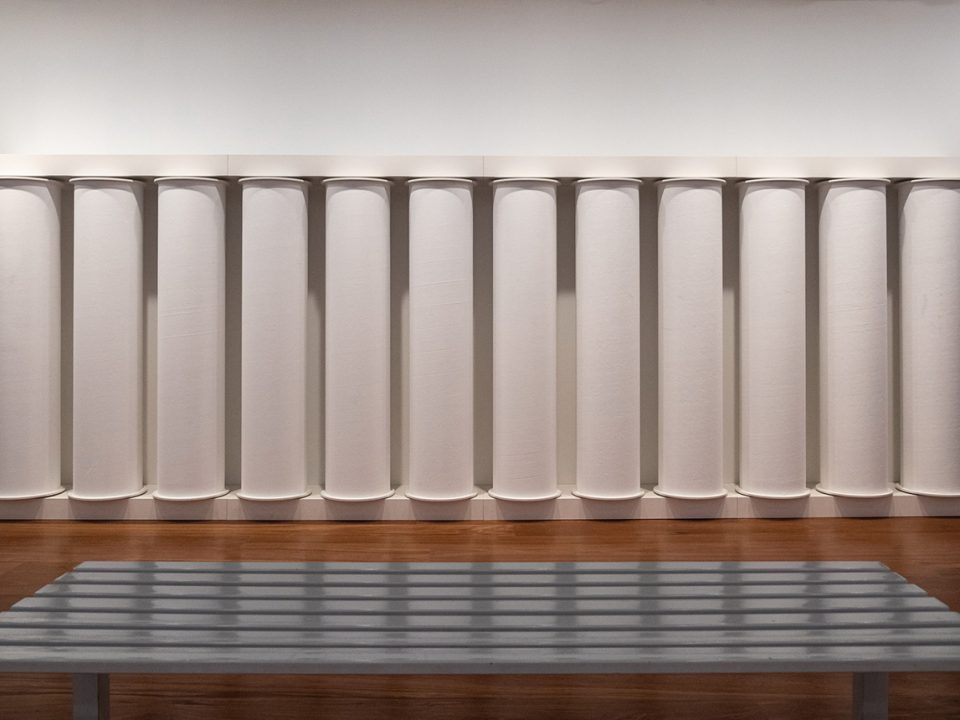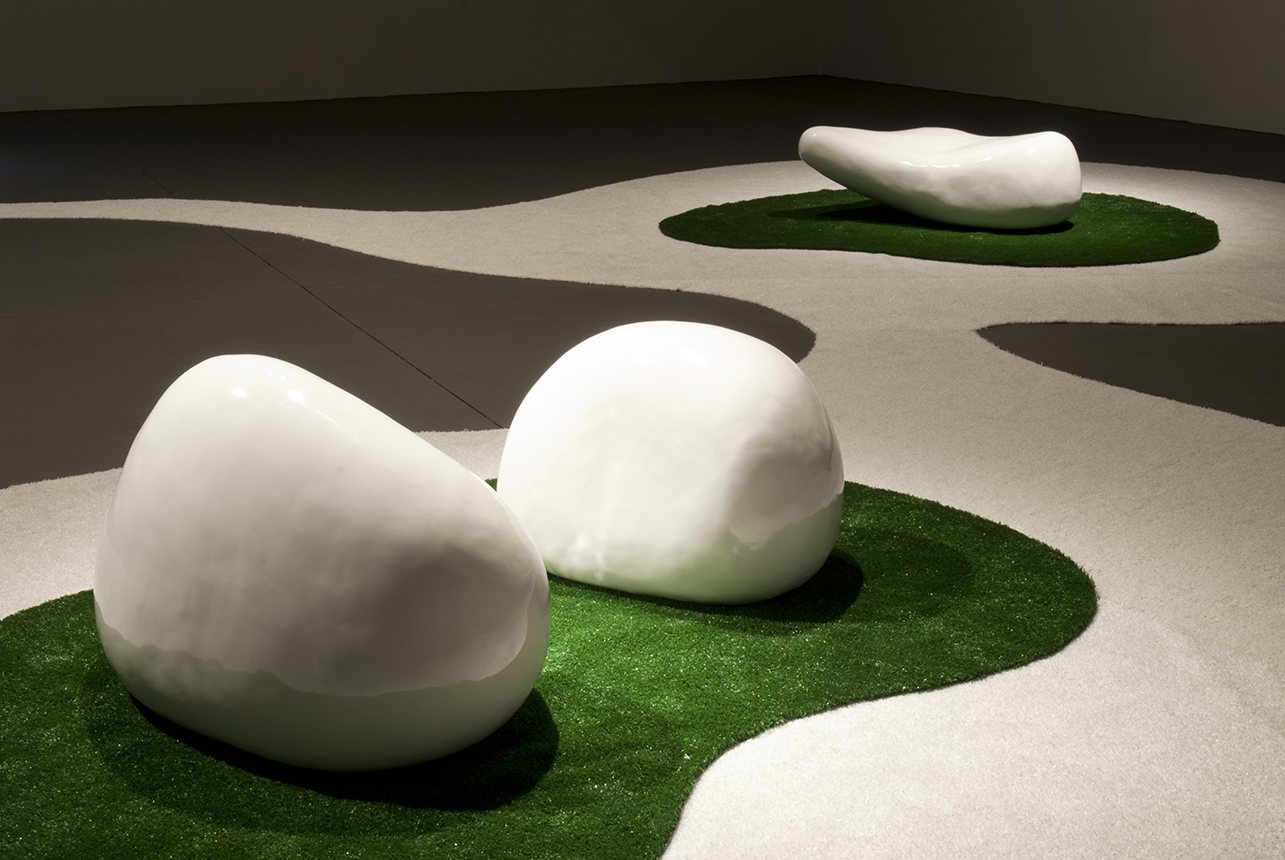
Garden
Mixed media: fiberglass sculptures, automotive paint
and synthetic grass.
Dim 9 x 9 m, 2011
Funarte Contemporary Art Award 2010, São Paulo, Brazil
Photo: Tatewaki Nio
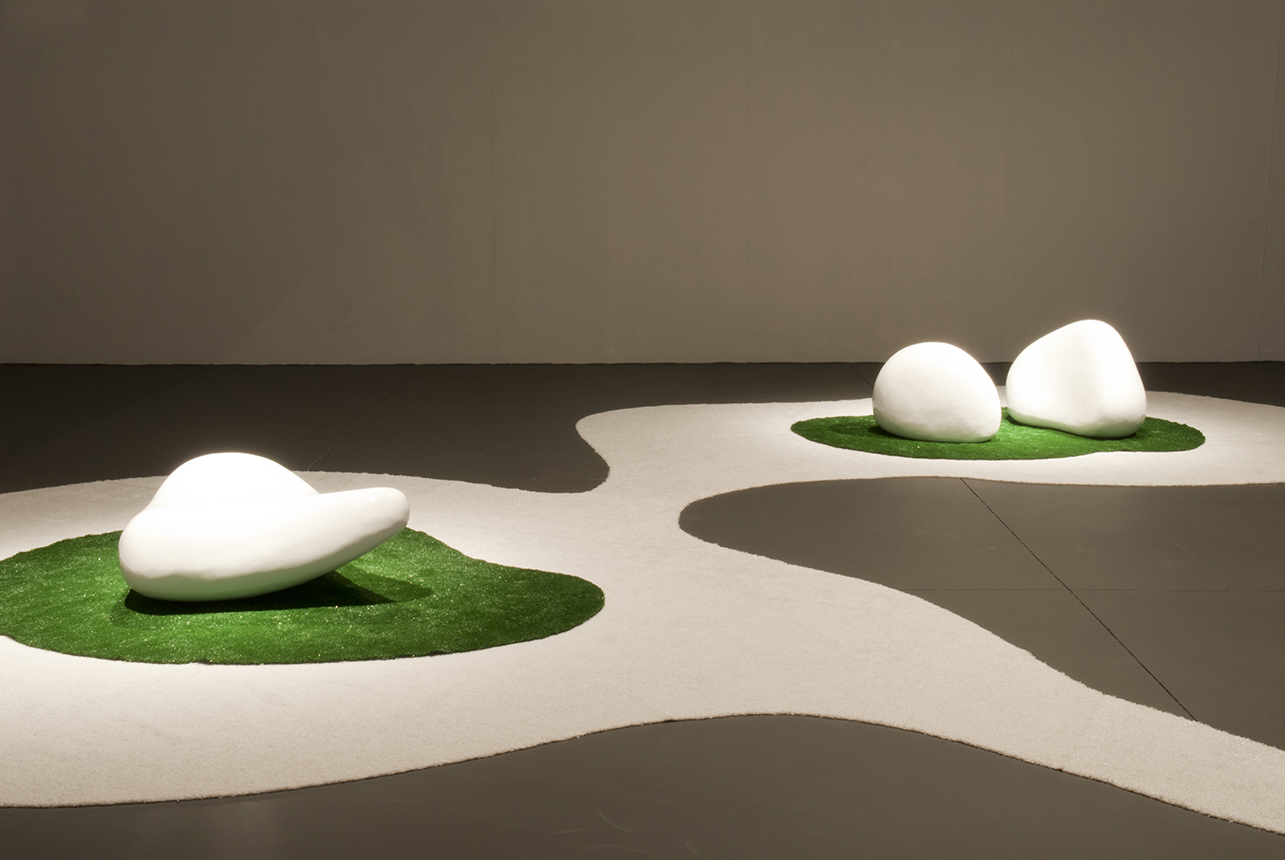
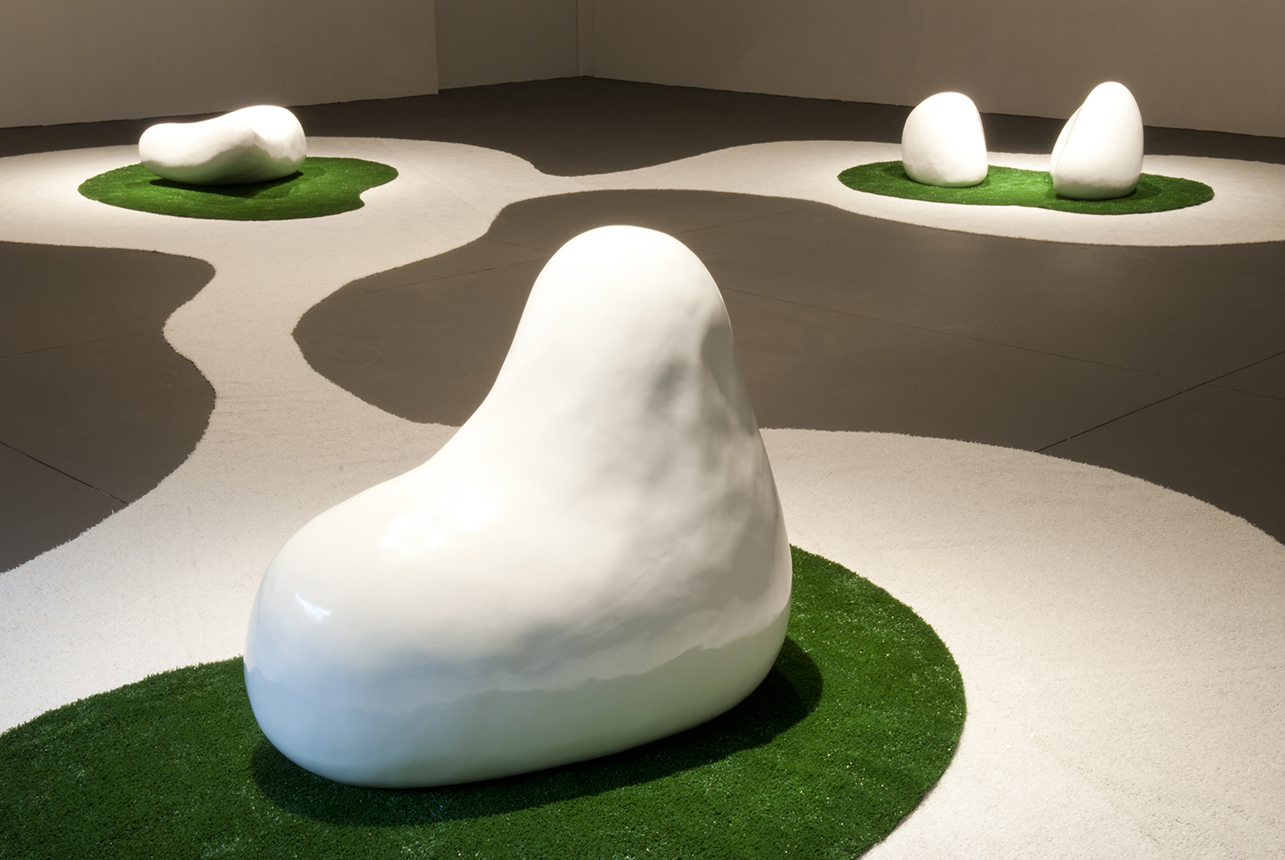
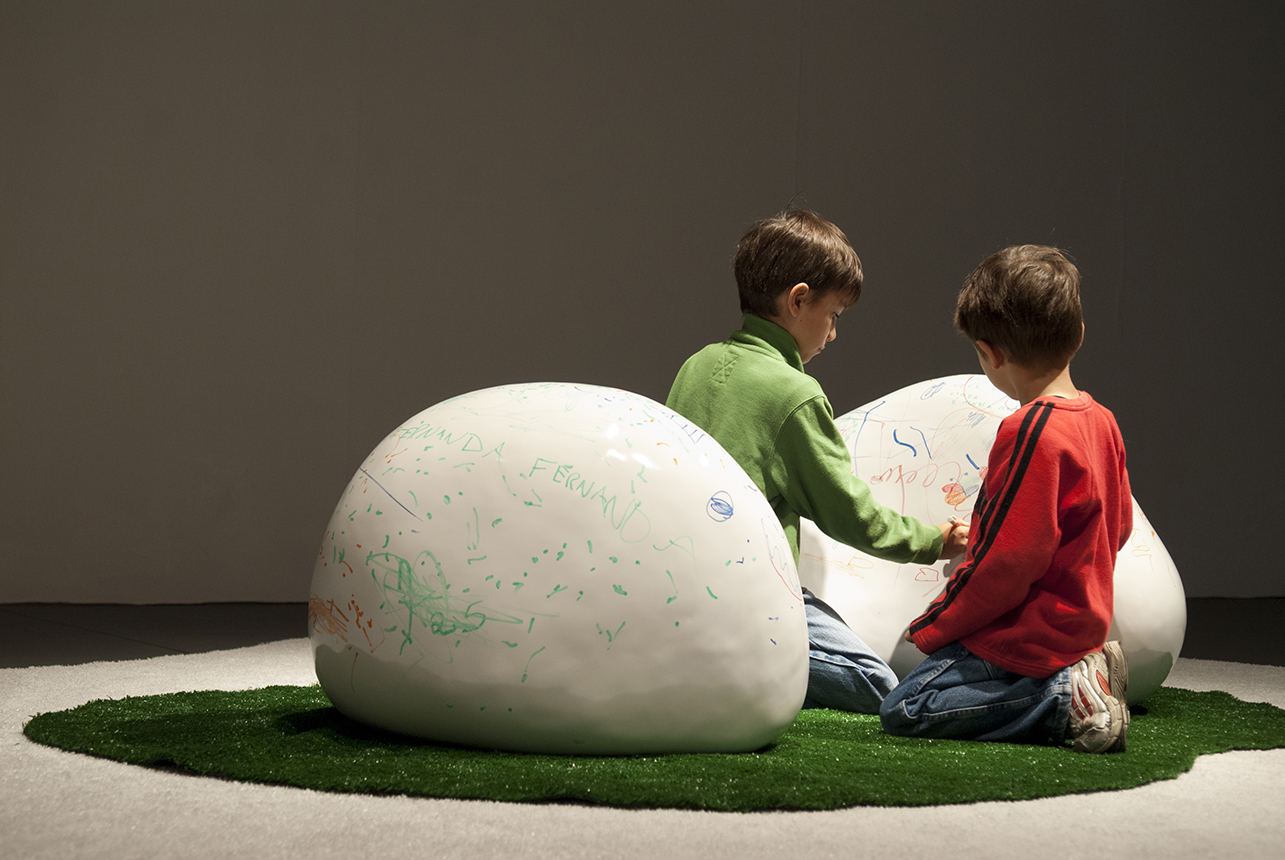
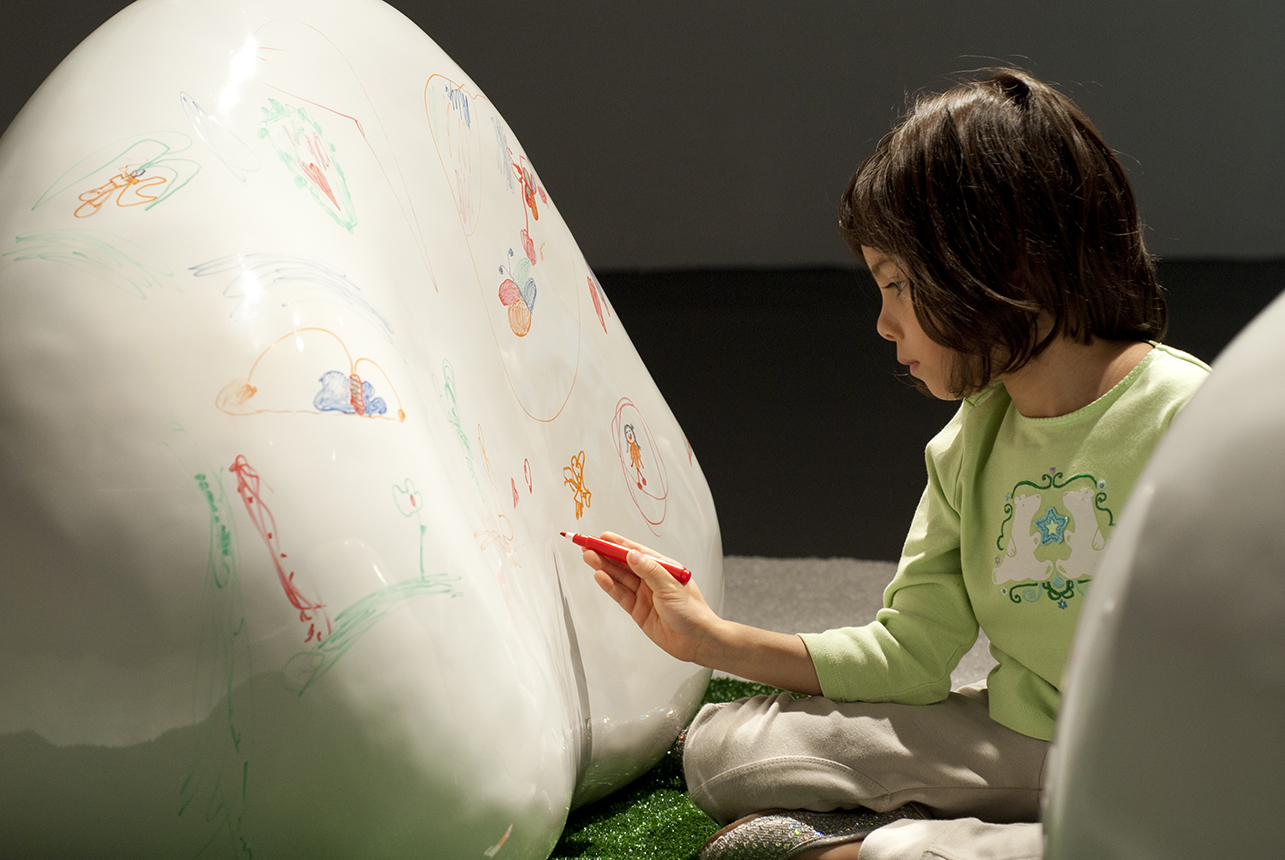
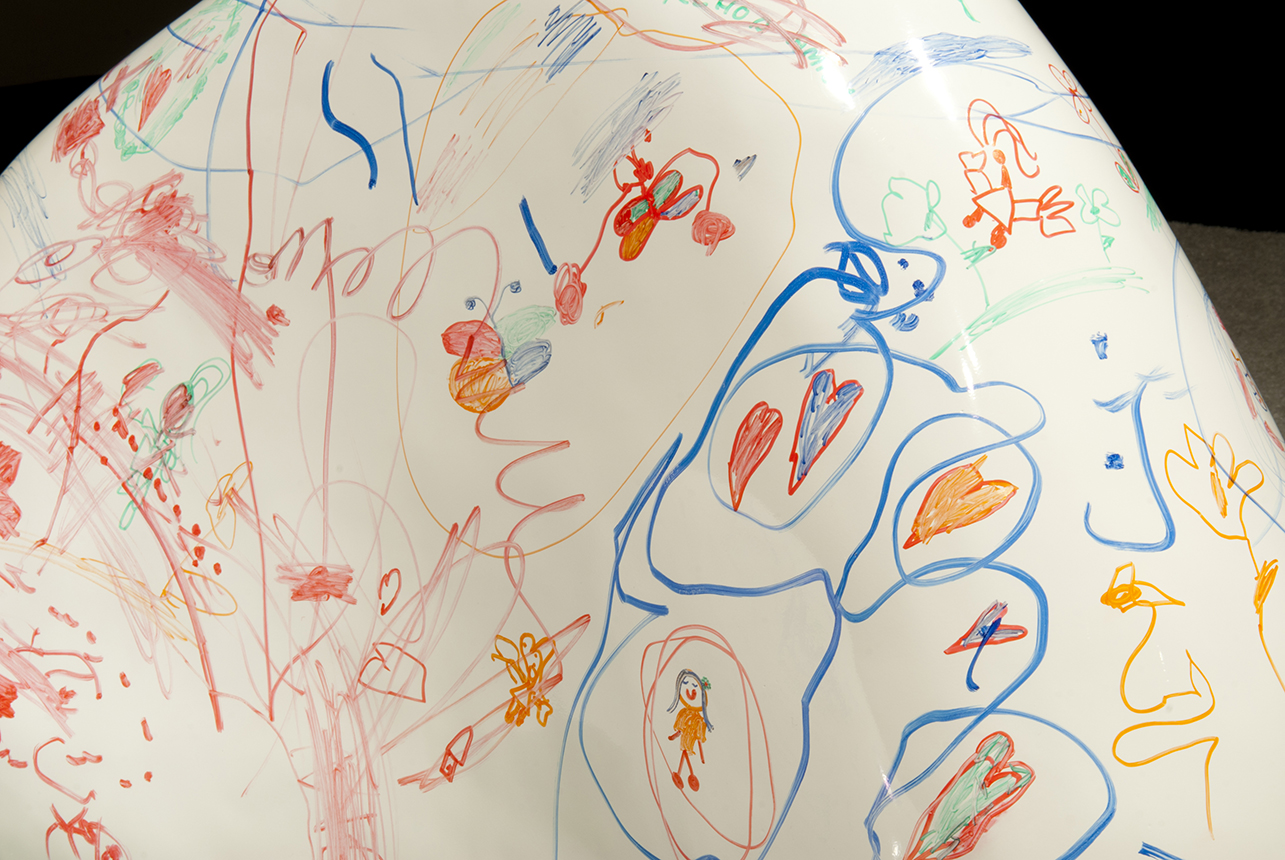
"(...) The cultural differences between East and West are a recurring theme in Erica’s artistic world view. Because she is both a Nikkei and a Brazilian, she questions her own cultural identity, which is in constant clash with the notion of territoriality. Until which point can we say that a Brazilian of Japanese origin is regarded as a true Brazilian, even in Brazil? In Japan, issues of race and identity depend, among other aspects, on where one is born, creating a situation in which Brazilian Nikkei are seen as foreigners in the land of their grandparents–a situation felt by Erica herself in her own skinpoetry. (…) This reflection on the cultural identity is expressed in the concept of this “Garden”, a territorial space culturally built and recreated under this cultural issue between Japan and the World, or between Me and the Other. In the context of this exhibition, the Other is the viewer, foreign to the artistic process, invited to express themselves through this artwork, in which the artist-creator, like a designer-gardener, becomes the facilitator of the viewer’s expression (just like a composer, when publishing their musical score for execution, will have their work recreated by the musician-interpreter). It’s as if, so doing, by opening her most subjective world, expressed by her artwork, Erica accepts the Other as an equal and collaborator in her creative territory. But, in the end, who does the artwork’s authorship belong to? Is it to become a collaborative work or will it keep the anonymity? Even consented, the intervention is still a scribble, cave-inscriptions of fluxes of consciousness and subjective emotional expressions (...)"
Christopher Zoellner Ph.D. of Arts and Textile Design
Tama Art University, Japan Tokyo, April 2011
_________________________________________
Jardim
"(...) As diferenças culturais entre Oriente e Ocidente são um tema recorrente na obra de Erica que, como nikkei e brasileira, se questiona sobre sua identidade cultural em constante choque com a noção de territorialidade. Até que ponto o descendente de japoneses é brasileiro, no Brasil? No Japão, a questão racial e identitária depende, entre outros aspectos, do local onde se nasceu, fazendo com que mesmo os nikkeis sejam vistos como estrangeiros na terra de seus bisavós – situação por ela sentida na própria pelepoesia (...) Essa reflexão sobre a identidade cultural se expressa no conceito desse “Jardim”, espaço territorial culturalmente construído e recriado sob essa problemática cultural entre o Japão e o Mundo, o Eu e o Outro. No contexto dessa exposição, o Outro é o público, o estrangeiro ao processo artístico, convidado a se manifestar por meio dessa obra, em que o artista-criador, como um designer-jardineiro, torna-se um facilitador da expressão do público (assim como um compositor, ao publicar sua partitura para execução, terá sua obra recriada pelo músico-intérprete). Parece que, assim, ao abrir seu mundo mais pessoal, expresso pela sua obra, Erica parece aceitar o Outro como um igual e colaborador em seu território criativo. Mas de quem será a autoria, por fim? Uma colaboração, uma anonimidade? Ainda que consentida, a intervenção não deixa de ser uma pichação-grafitti-garatuja, marcas-na-caverna de fluxos de consciência e expressões emocionais subjetivas (...)"
Christopher Zoellner , Doutor em Artes e Design Têxtil
Tama Art University, Japão Tóquio, Abril 2011


